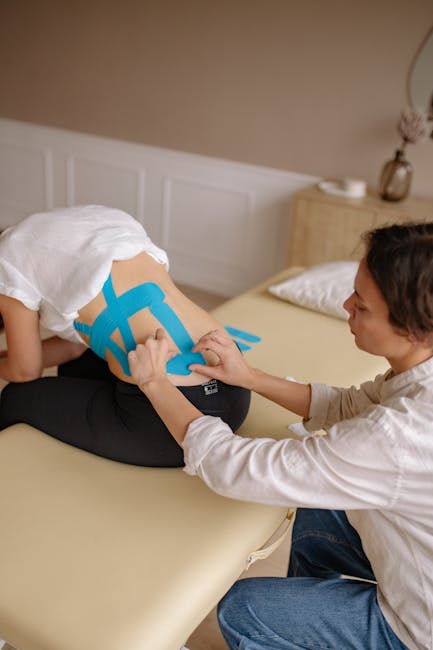- News
- Weather
- Sports
- Watch
- Community
- Features
- Stations
- Sign Up
- More
- Search
Understanding Peripheral Magnetic Stimulation
 Photo from Pexels
Photo from Pexels
Originally Posted On: https://goholistiq.com/understanding-peripheral-magnetic-stimulation/
Understanding Peripheral Magnetic Stimulation (PMS)
Peripheral Magnetic Stimulation (PMS), most commonly delivered as Repetitive Peripheral Magnetic Stimulation (rPMS) or Magnetic Peripheral Nerve Stimulation (mPNS), is an emerging non-invasive neuromodulation technique. Using pulsed magnetic fields, it stimulates peripheral nerves and muscles—offering pain relief and neuromuscular rehabilitation without medication or surgery (link.springer.com).
Unlike Transcranial Magnetic Stimulation (TMS), which targets brain circuitry, PMS focuses on spinal, muscular, or peripheral nerve regions—making it a natural fit for low back pain treatment. It’s FDA-cleared for chronic post-traumatic and post-surgical pain in adults and gaining traction in commercial devices like Brain Treatment Center, MagVenture Pain Therapy, and others (btcnorthaustin.com).
Growing Evidence Base & Clinical Studies
1. Meta-analysis of rPMS for Low Back Pain
A 2023 meta-analysis reviewed six randomized controlled trials with 139 participants suffering from low back pain. Compared to sham or standard therapies, rPMS led to statistically significant pain reduction (mean VAS drop of 1.89 points) and improved functional disability (Oswestry Disability Index drop of 8.39 points) (pubmed.ncbi.nlm.nih.gov). However, the authors noted that the evidence quality ranged from very low to low and recommended larger, higher-quality trials.
2. Chronic vs. Acute Back Pain
- A pilot study on acute low back pain (10 sessions compared to sham rPMS) showed immediate, sustained pain relief after just one session, along with functional improvements measured by ODI and RMDQ scores (e-arm.org).
- A July 2025 Annals of Rehabilitation Medicine pilot further supports rPMS efficacy in acute cases (sciencedirect.com).
3. Combining rPMS with Core Training
A 2024 randomized clinical trial combined rPMS with core muscle training in patients with chronic non-specific low back pain. This combo produced greater analgesic and postural control benefits versus sham, likely through enhanced activation of the primary motor cortex (pubmed.ncbi.nlm.nih.gov).
4. Mechanistic Insights
Research shows magnetic stimulation helps “recondition” the central nervous system by modulating sensory and pain fibers, effectively dampening the brain’s perception of noxious peripheral signals (btcnorthaustin.com).
How Peripheral Magnetic Stimulation Works
PMS systems send targeted magnetic pulses through specially designed coils to stimulate peripheral nerves or muscles. These pulses penetrate deep tissue and create induced electric fields in nerve fibers—modulating neural excitability, reducing hypersensitivity, and interrupting pain signaling pathways.
Session Format:
- Typically 3–13 minutes per session
- Initial series: 3–4 treatments over 2 months
- Maintenance sessions every 6–8 weeks
- Minimal to no side effects (occasional mild tingling, no drugs or anesthesia)
Role in a Pain Management Clinic
A. Treatment Setting
In U.S.-based pain clinics—Dallas, Austin, Rancho Mirage, and others—PMS is often embedded within multimodal pain programs:
- Assessment: Clinicians evaluate medical history, imaging, and pain characteristics.
- Customization: Coil placement, pulse intensity, and frequency are tailored to the target region—e.g. lumbar paraspinals, multifidus muscles, or specific peripheral nerves (magwise.org).
- Session Delivery: Patients lie comfortably while coils are positioned; a typical session lasts under 15 minutes, followed by observation.
- Maintenance & Monitoring: Pain levels and functional outcomes are tracked; follow-up and booster sessions are scheduled accordingly.
B. Integration with Other Methods
Clinics often integrate PMS with conventional therapies:
- Core muscle training, physiotherapy, and postural education—as in the rPMS + core exercise trial (pubmed.ncbi.nlm.nih.gov)
- Ultrasound-guided injections, offering diagnostic and synergetic therapeutic value.
C. Benefits in Practice
- Drug reduction: Some programs report up to 51% decrease in opioid usage.
- High patient satisfaction: Studies and commercial claims cite up to 87% pain relief in responsive individuals.
- Efficient workflow: Sessions take under 15 minutes, require no sedation, and allow quick turnover in a busy clinic setting.
- FDA clearance supports clinic adoption.
Limitations & Future Directions
1. Evidence Quality
Despite promising findings, the overall quality of rPMS research is rated very low to low. Trials often feature small sample sizes, heterogeneity in protocols, and short follow-up periods (pubmed.ncbi.nlm.nih.gov).
2. Standardization Needed
No consistent guidelines exist for optimal dose, frequency, coil type, target muscles, or number of sessions. The technology is still evolving.
3. Not Universally Effective
- rPMS may not benefit patients with radicular pain (pain radiating down the leg) .
- Responses vary greatly—up to 87% relief is reported in responders, but not everyone achieves that level (magventure.com).
4. Long-Term Outcomes
While short-term pain relief is well-documented, there is limited evidence on sustained benefits and functional improvements long-term.
Conclusion
Peripheral Magnetic Stimulation—whether rPMS or mPNS—is an innovative, non-invasive treatment modality gaining significant interest in pain management clinics. The growing body of research shows that PMS can reduce low back pain and improve function, sometimes dramatically when combined with core training. However, the evidence base still rests on limited and low-quality trials.
Clinics implementing PMS can offer a compelling, drug-free option that addresses both patient well-being and clinic efficiency. As research advances toward standardized protocols and long-term outcomes, PMS could become a mainstream adjunct in the multidisciplinary management of back pain.
Information contained on this page is provided by an independent third-party content provider. XPRMedia and this Site make no warranties or representations in connection therewith. If you are affiliated with this page and would like it removed please contact pressreleases@xpr.media
Erie News Now: Coverage You Can Count On

